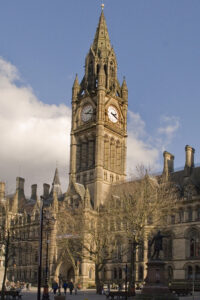Are you a resident or a tourist looking for ways to travel around London smoothly?
Whether you prefer riding public transportation, cycling, or cruising along the river, there are endless options available in the city.
Getting behind the wheel is the best option if you plan to have a road trip within or outside London.
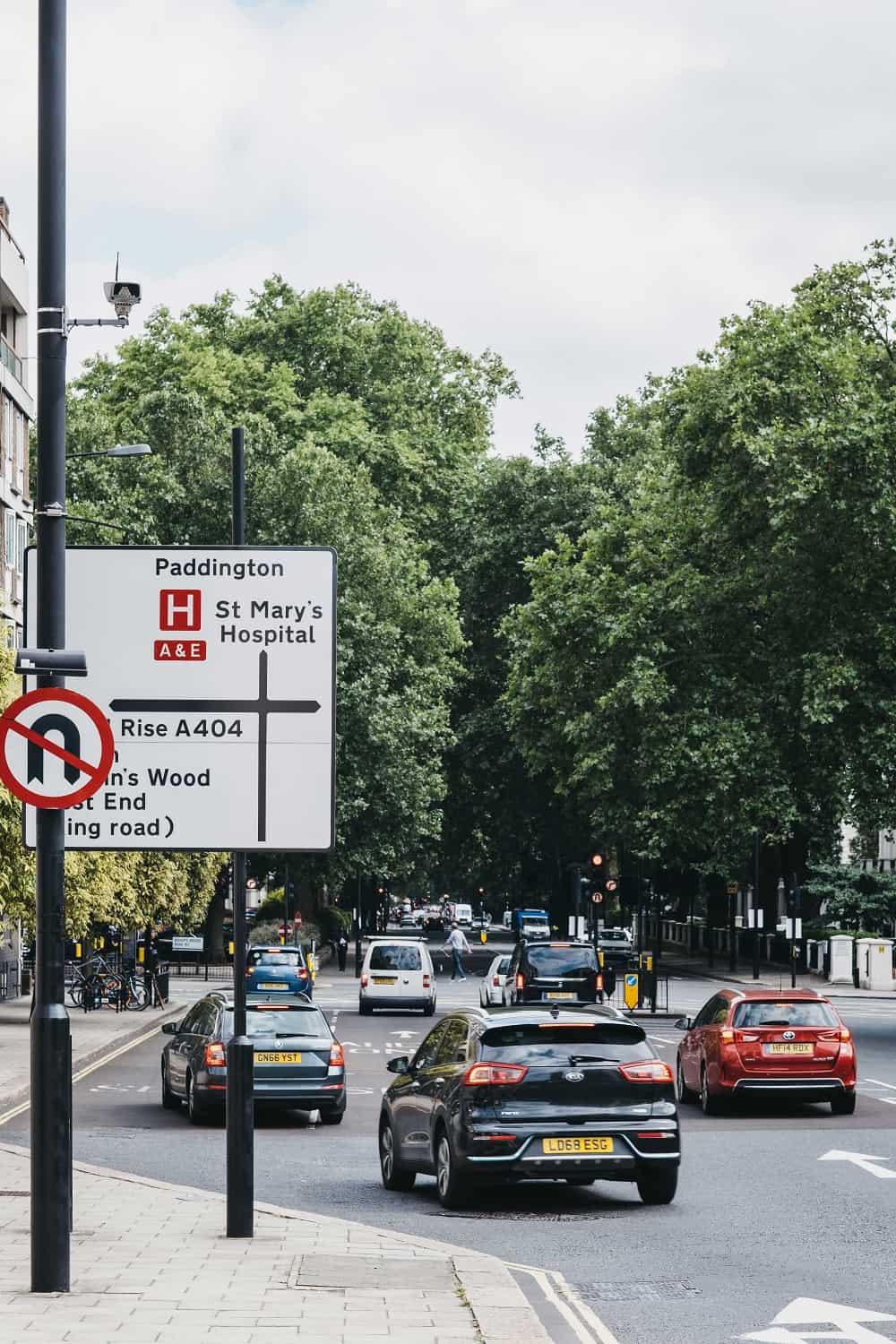
Before you hit the road and drive a vehicle, the responsible thing to do is to learn about the rules, charges, and basic guidelines when driving in London.
Not all countries follow the same laws and regulations, so it is always a good idea to check with the Transport for London (TfL) and Gov.UK for driving information and updates.
Fortunately, you have come across a one-stop article on everything there is to know about driving in London.
In this article, you will learn about zones, basic rules on the road, car parking, and many more.
Some other public transportation options you must know when travelling in London.
- London Underground
- London Bus
- London River Bus
- London Bike Rental
- London Trams
- London DLR
- London Overground
- London Cable Cars
- Taxis in London
Here is a summary of topics this article tackles:
- Am I Allowed to Go for a Drive in London?
- Is It Safe to Drive in London?
- Driving in London Charges
- Driving in London Tips
- Driving in London Offense and Penalty
- Red Routes in London
- Car Clubs in London
- Parking in London
- Places to Visit near London by Car
- Frequently Asked Questions
- Plan Your Journey Before Driving
- Ready to Start Your Road Trip?
Further Reading for Driving in the UK.
- Pay attention to the Congestion Charge when driving in London.
- If you are unlucky Losing your driving licence, it is not the world’s end, follow our detailed guide to Lost Driving licence UK | How To Replace And Apply.
- Want to check your driving licence online? Check out our guide to How To Check Status Of Driving Licence.
- Want to drive in the UK legally? You need a driving licence first. Follow these Steps to Get a Driving Licence in the UK.
- Before you decide to get a driving licence, you may want to know how much you are going to spend before applying for one. Check out our guide to how much for a driving licence.
- Choose one of the Best Driving Schools in London if you decide to learn to drive and get a full driving licence.
- You may want to know How Many Driving Lessons You Need to Pass the Driving Test.
- How much time should I spend on learning to drive? Read our guide to How Long Does It Take To Learn to Drive.
- Applying for the driving licence, but don’t know how to fill in the form? Download INF1D Booklet and read our guide to solve the problem.
- After applying for your driving licence, you may want to track your driving licence and know whether it is legal to drive if your Driving Licence Has Not Arrived.
- After getting your driving licence, you may be happy to learn more about it. Check out our guide to UK Driving Licence Explained.
- Can’t find out your Driving Licence Number? Don’t worry about it, here is a step-by-step guide to How to Get Driving Licence Number if Lost.
- Unfortunately, you get a Private Parking Ticket, but you don’t know how to deal with it. Should you pay for it? Check out our guide to Do You Have To Pay Private Parking Tickets.
- You may want to buy Car Insurance but don’t know how to buy it. Check out our guide to A Comprehensive Guide on Car Insurance in the UK.
- Can’t Remember your Car Insurance Company? Check out our guide to Who Am I Insured With.
- If you forgot your Car Insurance Expiry Date and want to find it out, here is our guide to 5 Ways To Check your Car Insurance Expiry Date.
Contents
- 1 Am I Allowed to Go for a Drive in London?
- 2 Is It Safe to Drive in London?
- 3 Driving in London Charges
- 4 Driving in London Tips
- 4.1 Follow Dos and Don’ts for Drivers
- 4.2 Keep Left
- 4.3 Wear the Seatbelt
- 4.4 Be Familiar with Traffic Signs
- 4.5 Know How to Use Road Markings
- 4.6 Follow Correct Signaling
- 4.7 Overtake in a Safe Way
- 4.8 Be Aware of Pedestrian Crossings
- 4.9 Follow Signals from Authorized Persons
- 4.10 Be Familiar with Light Signals Controlling Traffic
- 4.11 Do not Exceed the Speed Limit
- 5 Driving in London Offense and Penalty
- 6 Red Routes in London
- 7 Car Clubs in London
- 8 Parking in London
- 9 Frequently Asked Questions
- 10 Plan Your Journey Before Driving
- 11 Ready to Start Your Road Trip?
Am I Allowed to Go for a Drive in London?
It is common law in most countries to have a full and valid driving licence to drive a vehicle.
In Great Britain, you can start driving as early as 16 years old with an enhanced rate of the mobility component of Personal Independence Payment (PIP).
Foreign tourists are often required to have an international driving licence in order to drive a vehicle in another country.
Luckily, tourists in the United Kingdom do not need an international driving licence to drive. In order to start driving in London, all you need is a full and valid driving licence.
If you have a non-GB (Great Britain) licence, you need to check if your non-GB licence can be used to drive.
Whether you are a visitor or a resident who passed the driving test in Great Britain, the EU, or European Economic Area, you can drive any type of vehicle listed on your licence.
However, if you are a visitor who passed the driving test in Jersey, Guernsey, the Isle of Man, or other countries, you can drive only small vehicles for one year upon entering Great Britain.
You need to have an insurance ‘green card’ or any proof of insurance if you are bringing a vehicle that is insured in the EU, Andorra, Iceland, Liechtenstein, Norway, Serbia, or Switzerland.
Foreign students with an EU driving licence can drive until its expiration, whereas foreign students with a non-EU driving licence or international driving permit can drive for one year upon entering Great Britain.
Here is what you need to do before driving in London:
- Check your vehicle if it is compliant with the emissions and safety standard requirements.
- Have your full and valid driving licence with you.
- Bring your passport as well as this may be required when renting a vehicle as a tourist.
- You may also need to present your hotel booking as proof of stay as part of the rental requirements of some car rental companies.
Is It Safe to Drive in London?
Whichever city or country you may drive in, you should always take extra precautions and drive at safe speeds.
London is considered one of the safest cities to drive a vehicle with its fully equipped roads with traffic lights, road markings, and appropriate lanes.
Moreover, vehicles are checked if they are compliant with emissions and safety standards.
It is a shared responsibility between the driver and the governing bodies for transportation. Thus, make sure you do your part as well to make the city safe for driving.
Do not drive under the influence, follow road regulations, and fasten your seat belt.
Driving in London Charges
Gas is not the only thing you have to think about since there are charges you may have to pay depending on your vehicle registration.
The three fees to keep in mind are Congestion Zone, Ultra Low Emission Zone (ULEZ), and Low Emission Zone (LEZ) charges. If you enter any of the three zones, be prepared to pay the necessary fees, especially if your vehicle is not ULEZ or LEZ compliant.
To know if you need to pay for them, check your vehicle’s registration by entering the number plate and country of registration.
If you need to pay, you can easily pay the charges online in order to drive in London. Simply enter the vehicle registration mark or sign in to your account.
Refer to the London Charges summary table below for easy reference.
Congestion Charge
The purpose of Congestion Charges is to help lessen traffic and pollution. Moreover, it aims to encourage travelers to use public transportation instead of driving a vehicle.
The Congestion Charge costs £15 a day and is already valid for the whole day.
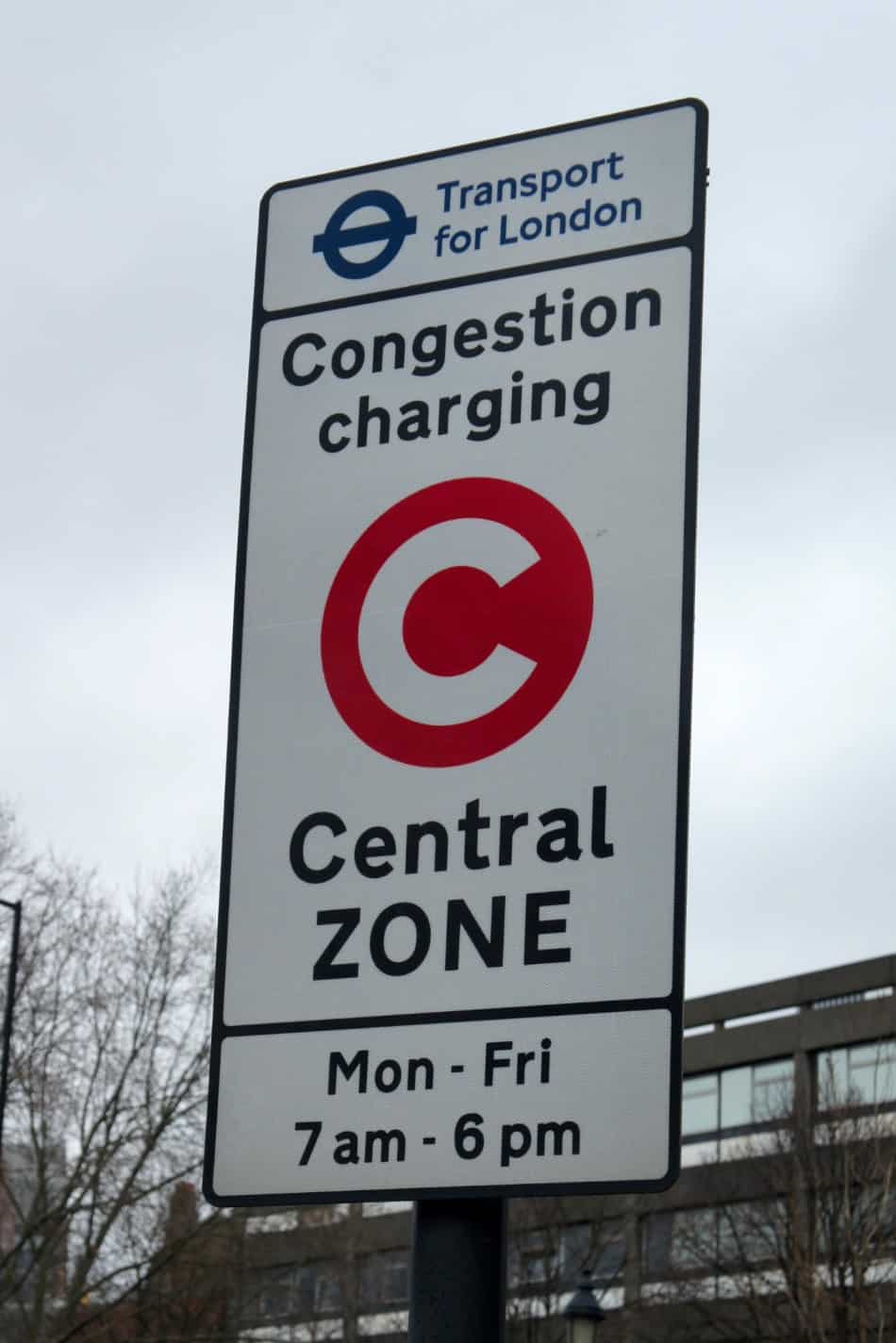
Congestion Charge zones are indicated with a circular red sign with the letter C or you can also find a Congestion Charge zone by checking the map or searching the postcode.
If you drive within the Congestion Charge zones from Monday to Friday between 07:00 am to 06:00 pm and on the weekends and bank holidays from 12:00 pm to 06:00 pm, you will have to pay the Congestion Charge.
To learn more about Congestion Charges, read the guide What You Need to Know about London Congestion Charge.
Ultra Low Emission Zone (ULEZ)
ULEZ aims to improve air quality by utilizing 24-hour ULEZ areas seven days a week. If your vehicle is not ULEZ compliant, you have to pay £12.50 for the day.
The fee is for non-compliant vehicles such as cars, motorcycles, and vans with a maximum weight of 3.5 tonnes and minibuses weighing up to 5 tonnes.
If using a lorry, van, or any heavy vehicle weighing more than 3.5 tonnes, or a bus, minibus, or coach weighing more than 5 tonnes, you do not have to pay the ULEZ charge.
However, you may have to pay the LEZ charge if it is not LEZ emissions standard compliant.
If you do not want to pay the ULEZ charge, check where and when the ULEZ operates and try to avoid them on your route.
Low Emission Zone (LEZ)
LEZ was initiated specifically for heavy diesel vehicles in London. It urges drivers with heavy diesel vehicles to have cleaner vehicles in order to be LEZ compliant. The zones are active 24 hours a day seven days a week.
Depending on the type of vehicle, the LEZ charge is either £100 or 300. The fees are to be paid as early as three days before entering the zone and up to 90 days.
Before traveling, find out where and when the LEZ operates.
London Charges Summary Table
| London Charge | Fee | Day and Time | Discounts and Exemptions |
| Congestion Charge (CC) | £15 daily charge | Monday to Friday
(07:00 to 18:00) Saturday, Sunday, Bank Holidays (12:00-18:00) No charge on the days between Christmas Day and New Year’s Day |
Discounted rates and free of charge list |
| Ultra Low Emission Zone (ULEZ) | £12.50 daily charge
|
Monday to Sunday
(24 hours a day) No charge on Christmas Day (December 25th) |
Temporary discount and full exemption list |
| Low Emission Zone (LEZ) | £100
£100 (Vehicles that are not Euro VI (NOx and PM) standard compliant but are Euro IV (PM) compliant)
£300 (Vehicles that are not Euro IV (PM) compliant)
|
Monday to Sunday
(24 hours a day) No charge on Christmas Day (December 25th) |
List of four types of vehicles exempted |
Driving in London Tips
Have a quick read on the basic rules on driving in London to avoid getting a ticket and prevent accidents. It may take a while to get used to the different driving rules in London.
Thus, it is recommended to prepare ahead of time by familiarizing yourself with the road, signs, and signals by searching for pictures and watching videos online.
You can find all the information you need in The Highway Code manual from the Department for Transport. To get you started, here is a brief explanation of the basic rules for driving in London.
Follow Dos and Don’ts for Drivers
- As part of the rules for drivers and motorcyclists, you have to make sure you are fit to drive and have fully disclosed any underlying medical condition that may hinder safe driving.
- You should be able to read the vehicle number plate within a 20-meter distance with or without eyeglasses.
- It is not allowed to drive under the influence of alcohol, drugs, or medicines. The breath alcohol level test should be less than 35 microgrammes or 100 milliliters of breath. The blood alcohol level test should be less than 50 milligrams or 100 milliliters of blood.
- Before driving, make sure you have your valid driving licence and have planned your route accordingly.
Keep Left
- All vehicles must be driven on the left side of the road.
Wear the Seatbelt
- The driver and passengers should wear a seatbelt at all times.
- Use an approved child restraint for children below three years old and children with a height of 1.35 meters. Children below 1.35 meters should use a baby seat, child seat, or booster seat.
- Only those with medical exemption certificates are exempted from wearing a seatbelt.
- If one of the passengers does not wear a seatbelt, the driver of the vehicle will be held responsible. The only time a passenger will be held responsible is when a passenger aged 14 years old and above does not wear a seatbelt at the front and rear seats.
Be Familiar with Traffic Signs
- Get to know the common traffic signs by downloading the PDF file of Traffic Signs.
- The signs are for giving orders, warnings, directions, information, and road work.
- Signs giving orders are usually in red circles to indicate prohibition and blue circles for positive instruction.
- Warning signs are usually in red triangles.
- Signs for directions are usually blue or green rectangular signs.
Know How to Use Road Markings
- Follow the correct use of road markings to know whether you can stop, give way, or wait on the road you are on.
- Download the PDF file of Road Markings to learn more.
- If you need to load or unload, check if there are road markings such as a double yellow line, single yellow line, or a white bay marking.
- Be aware of Red Routes to know if you are allowed to stop or not on the road. Red Routes are further explained below.
Follow Correct Signaling
- Let other road users know where you are going by using direction indicator signals.
- Use arm signals instead if not using direction indicator signals.
- Use the brake light signals as needed.
- Hazard lights must be used for warning signals.
Overtake in a Safe Way
- Only overtake when you can clearly see that there is enough space on the road ahead.
- Do not follow another vehicle overtaking as there may only be enough space for one vehicle to overtake.
Be Aware of Pedestrian Crossings
- Parking on pedestrian crossings or roads with zig-zag markings is not allowed.
- Crossings should always be kept clear to allow pedestrians to cross safely.
- Always give priority to pedestrians who wish to cross zebra crossings.
- Pelican crossings have red and amber street lights. Stop when the light turns red and give way to pedestrians crossing when the light turns amber.
Follow Signals from Authorized Persons
- Authorized persons are police officers or traffic controllers. They give arm signals to control traffic or ask you to stop.
- Not only authorized persons give signals, but the drivers as well. Give appropriate arm signals to the authorized persons when you want to go straight, turn left, or turn right.
Be Familiar with Light Signals Controlling Traffic
- Light signals are either traffic lights, flashing red lights, motorway signals, or lane control signals.
- Traffic lights have red, amber, and green lights. Red or both red and amber light means stop. Amber means to stop at the stop line and green means to go when the road is clear.
- When you see lane control signal arrows, the green arrow means the lane is available, the white arrow means to change lanes, and the red “X” mark means the lane is closed.
Do not Exceed the Speed Limit
- The speed limit is typically 30 mph or 48 kph on all roads except for those with specific speed limit signs.
- Do not attempt to exceed the speed limit since there are speed cameras and speed guns used by police officers to check if you are complying.
- Check the table below to know about speed limits on various roads and vehicles.
| Vehicle Type | Built-up roads | Single carriageway
(Undivided highway) |
Dual carriageway (Divided highway) | Motorway (Freeway) |
| Cars, motorcycles, and vans (maximum 2 tonnes laden weight) | 30 mph or 48 kph | 60 or 96 kph | 70 or 112 kph | 70 or 112 kph |
| Cars towing caravans and trailers | 30 mph or 48 kph | 50 mph or 80 kph | 60 mph or 96 kph | 60 mph or 96 kph |
| Motorhomes and motor caravans (less than 3.05 tonnes unladen weight) | 30 mph or 48 kph | 60 mph or 96 kph | 70 mph or 112 kph | 70 mph or 112 kph |
| Motorhomes and motor caravans (more than 3.05 tonnes unladen weight) | 30 mph or 48 kph | 50 mph or 80 kph | 60 mph or 96 kph | 70 mph or 112 kph |
| Buses, coaches, and minibuses (with a length of less than 12 meters) | 30 mph or 48 kph | 50 mph or 80 kph | 60 mph or 96 kph | 70 mph or 112 kph |
| Goods vehicles (less than 7.5 tonnes laden weight) | 30 mph or 48 kph | 50 mph or 80 kph | 60 mph or 96 kph | 70 mph or 112 kph |
| Goods vehicles in England and Wales (more than 7.5 tonnes laden weight) | 30 mph or 48 kph | 50 mph or 80 kph | 60 mph or 96 kph | 60 mph or 96 kph |
Driving in London Offense and Penalty
If you do not follow the rules of driving in London and get caught by a police officer, you are given a penalty as a consequence. The maximum penalty depends on the offense committed.
Refer to the table below for the complete list of offenses and their maximum penalty according to the Highway Code Annex 5. Penalties.
Offense and Penalty Table
| Offense | Penalties That Can Be Imposed |
| Dangerous driving leading to death |
|
| Dangerous driving |
|
| Careless driving under the influence of alcohol or drugs leading to death |
|
| Careless and inconsiderate driving |
|
| Driving without insurance | Unlimited fine / Discretionary disqualification |
| Driving while under the influence of alcohol or drugs (no breath or blood alcohol level specimen provided for analysis) |
|
| Caused an accident and failed to stop or report it |
|
| Disqualified drivers |
|
| Driving after revocation or refusal of a licence based on medical reasons |
|
| Driving when the condition of the vehicle is not safe to use or dangerous |
|
| Having a poor view of the road or not maintaining proper control of the vehicle |
|
| Driving while using mobile phones |
|
| Non-compliance with licence requirements |
|
| Driving beyond the speed limit |
|
| Not following traffic light signals |
|
| Driving a vehicle without an MOT certificate | £1,000 fine |
| Driving without the identification of the driver |
|
| Not using a seat belt | £500 fine |
Red Routes in London
Aside from white or yellow road markings, you may find some roads with red markings which are called Red Routes.
London’s roads are composed of about 5% Red Routes to ensure continuous flow and lessen traffic congestion.
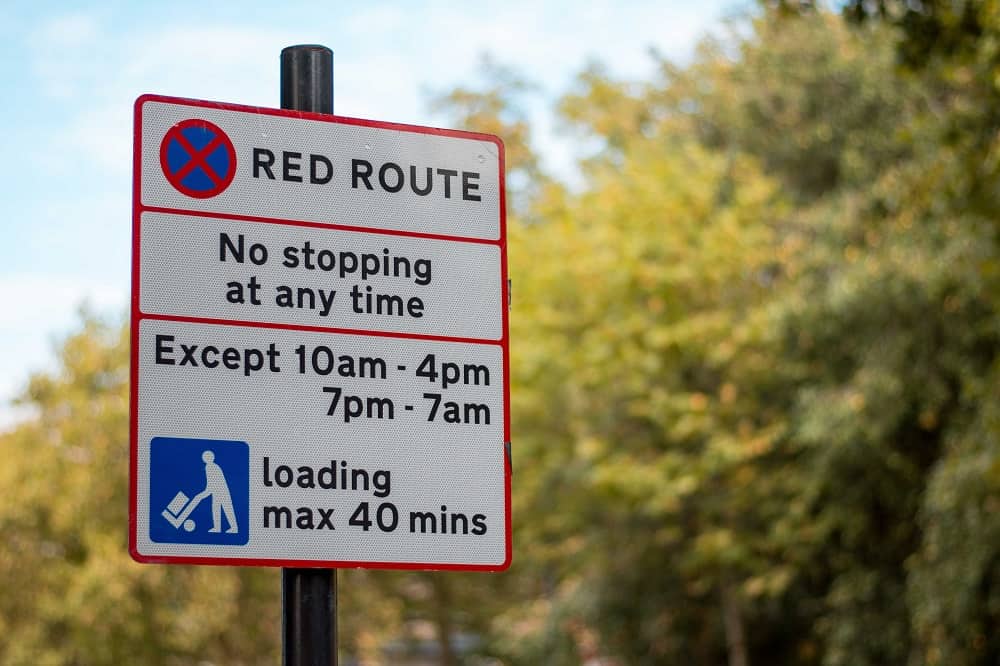
Red Routes are basically areas where stopping is strictly prohibited at all times or only during the allowable time as indicated on the sign.
When you see double red lines on the carriageway, pavement, or verge, it means you are not allowed to stop at any time and that you should continue driving.
For single red lines, you are not allowed to stop during the time and day indicated on the sign.
For example, some signs may show that you are not allowed to stop from Mondays to Saturdays between 07:00 am and 07:00 pm.
If you see a box marked in red broken lines, you can only load during the times indicated on the sign. Loading in this area is usually for a maximum of 20 minutes.
Afterwhich, you will have to leave the Red Route right away. For roads with a box marked in white broken lines, you can park for a limited time and during the specific times and days mentioned on the sign.
Use TfL’s Red Route maps to help you plan your routes and avoid them if needed. Download the following maps below or refer to the list of Red Routes managed by TfL.
List of Red Routes Managed by TfL
| Routes Managed by TfL | Route Coverage |
| A1 | Angel, Islington ↔️ Borehamwood |
| A10 | London Bridge ↔️ M25 Junction 25 |
| A11 | Aldgate ↔️ Bow Interchange |
| A12 | Blackwall Tunnel ↔️ M25 Junction 28 |
| A13 | Aldgate ↔️ Purfleet |
| A100 | Tower Bridge ↔️ Bricklayers Arms |
| A101 | Limehouse ↔️ Bermondsey |
| A102 | Lower Clapton ↔️ Hackney Wick |
| A102 | Blackwall Tunnel ↔️ Blackheath |
| A107 | Stamford Hill ↔️ Lower Clapton |
| A127 | Gallows Corner ↔️ M25 Junction 29 |
| A1020 | Beckton ↔️ Woolwich Ferry |
| A1023 | Tower Bridge ↔️ Limehouse Link |
| A1202 | Aldgate ↔️ Old Street |
| A1205 | Bow ↔️ Poplar |
| A1261 | Limehouse ↔️ Leamouth |
| A1400 | M11 Junction 4 ↔️ Gants Hill |
| A2 | Borough ↔️ Bexley |
| A20 | New Cross ↔️ Ruxley |
| A21 | Lewisham ↔️ M25 Junction 4 |
| A22 | Purley ↔️ Whyteleafe |
| A23 | Kennington ↔️ Chipstead |
| A24 | Clapham Common ↔️ Nonsuch Park, Cheam |
| A200 | London Bridge ↔️ Bermondsey |
| A201 | King’s Cross ↔️ Bricklayers Arms |
| A202 | Victoria ↔️ New Cross |
| A203 | Vauxhall ↔️ Brixton |
| A205 | M4 Chiswick ↔️ Woolwich Ferry |
| A210 | Lee ↔️ Eltham Green |
| A214 | Wandsworth ↔️ Streatham |
| A217 | Rosehill ↔️ Belmont |
| A232 | Nonsuch Park, Cheam ↔️ Locksbottom |
| A240 | Kingston Bypass ↔️ Worcester Park Road |
| A243 | Kingston Bypass ↔️ Ashtead Common |
| A2213 | Kidbrooke ↔️ Lee |
| A3 | London Bridge ↔️Ditton Hill |
| A30 | Cranford ↔️ Staines |
| A302 | Parliament Square ↔️ Elephant & Castle |
| A306 | Barnes ↔️ Roehampton |
| A312 | Northolt ↔️ Hanworth |
| A316 | Chiswick ↔️ Sunbury-on-Thames |
| A3036 | Vauxhall ↔️ Westminster Bridge |
| A3200 | Westminster Bridge ↔️ London Bridge |
| A3203 | Millbank ↔️ Lambeth |
| A3204 | Vauxhall ↔️ Elephant & Castle |
| A3205 | Vauxhall ↔️ Wandsworth |
| A3211 | Westminster ↔️ Tower Bridge |
| A3212 | Westminster ↔️ Battersea Bridge |
| A3220 | The Westway ↔️ Clapham Common |
| A4 | Hyde Park Corner ↔️ Longford |
| A40 | The Westway ↔️ Uxbridge |
| A41 | Baker Street ↔️ M1 Junction 4 |
| A400 | Euston ↔️ Camden Town |
| A406 | M4 Chiswick ↔️ Beckton |
| A4180 | Northolt ↔️ Ruislip |
| A4200 | Camden Town ↔️ Mornington Crescent |
| A4202 | Marble Arch ↔️ Hyde Park Corner |
| A5 | Hyde Park Corner ↔️ Warwick Avenue |
| A501 | The Westway ↔️ Old Street |
| A503 | Camden Town ↔️ Seven Sisters |
| A5205 | Warwick Avenue ↔️ Regent’s Park |
Penalty Charge on Red Routes
You will be given a Penalty Charge Notice (PCN) if you stopped on “No Stopping” Red Routes or do not follow the allowable time and duration for stopping.
The penalty charge costs £160 if paid within 28 days or £80 if paid within 14 days. However, if you believe you should not have been given a PCN, you can always challenge a PCN online, by mail, or by phone.
Challenging a PCN requires your PCN number, vehicle registration mark, and an explanation of why you believe the PCN is incorrect. It should be done within 28 days of receiving the PCN.
Your challenged PCN will either be accepted or rejected through written confirmation or rejection.
Red Route Exemptions or Dispensations
If you think you have to use the Red Routes longer than the allowed duration or during prohibited times, you may apply for a Red Route dispensation or exemption.
Getting a Red Route dispensation is common during moving in or out of a home, delivering heavy or multiple items requiring a longer parking period, or during building construction.
The cost of a Red Route dispensation on double and single red lines is £48 daily for one vehicle only.
Dispensation for stopping at a loading or parking bay costs £38 daily for one vehicle. If you need two vehicles, you will have to apply the dispensation for two vehicles.
To apply for a dispensation permit, call 0343 222 3333 and press option 2.
You need to provide the date and time, reason, location, red route controls, contact information, and vehicle description.
If your application is approved, you will then inform them of the vehicle registration mark and pay the fee. The application process usually takes up to six business days to complete.
Car Clubs in London
If you are a tourist planning to drive in London, you can easily get a car through a variety of car rentals. Short-term car rental services are referred to as Car Clubs in London.
Rented vehicles are paid per minute, hour, or day and can be returned to either the original spot where it was picked up or at a dedicated parking space at your destination.
Before renting a vehicle, make sure it is ULEZ or LEZ compliant to avoid paying charges.
Listed below are some car-sharing services and organizations recognized by TfL where you can get reliable information on car rentals.
Refer to the Vehicle Rental Company Table Comparison to know which car rental service offers the best price.
Vehicle Rental Company Table Comparison
| Rental Company | How to Rent | Membership fee | Rates | ||||
| Co-wheels | 1. Set up an account with your personal details.
2. Verify your driver details by submitting your driver’s licence. 3. Wait for a confirmation email. 4. Receive the smartcard and welcome pack within one week. 5. Receive your invoice. |
£25 joining fee and a monthly membership subscription | Vehicle | Rate per hour | Rate per day | Rate per mile | EV mile |
| City | £5 | £40 | £0.2 | £0.05 | |||
| Everyday | £5.75 | £46 | £0.2 | £0.05 | |||
| Family | £6.5 | £52 | £0.2 | £0.05 | |||
| 7 Seater | £7.5 | £60 | £0.22 | – | |||
| Van | £7.5 | £60 | £0.22 | £0.07 | |||
| Hydrogen car | £7.5 | £60 | £0.26 | – | |||
| Enterprise
Ubeeqo Zipcar |
1. Download the app via AppStore or Google Play.
2. Select your location and wait for approval to join. 3. After approval, you will have an access card to get started. 4. Choose a car-sharing vehicle. 5. Select your start and end times and reserve. 6. Unlock the vehicle using the Enterprise Car Club app. 7. Get the keys after following the steps indicated on the pin pad in the glove box. 8. After using the car, return it to its original parking spot. |
Enhanced Plan
£6.15 per hour and a Monthly membership fee of £20
Standard+ Plan £8.19 per hour and a Monthly membership fee of £7 or an Annual membership fee of £60
Standard Plan £7.65 per hour and a Monthly membership fee of £7 or an Annual membership fee of £60
Under 22 Plan £8.65 per hour and a Monthly membership fee of £6 |
Vehicle | Rate per hour | Rate per day | Rate per mile | Weekend rate |
| Small
|
£7.65 | £61.55 | £0.27 | £8.15/hr £65.555/day | |||
| Economy | £8.90 | £73.60 | £0.27 | £9.55/hr £78.80/day | |||
| Standard | £9.40 | £78 | £0.27 | £10.10/hr £83.65/day | |||
| Large | £10.40 | £88.60 | £0.27 | £11.15/hr £95.30/day | |||
| Estate | £9.90 | £83.60 | £0.27 | £10.60/hr £89.80/day | |||
| SUV – Standard | £9.90 | £83.60 | £0.27 | £10.60/hr £89.80/day | |||
| Economy Van | £9.90 | £83.60 | £0.35 | £10.60/hr £89.80/day | |||
| Standard Van | £11.60 | £93.60 | £0.35 | £12.55/hr £101.60/day | |||
| Large Van
|
£12.90 | £107.10 | £0.35 | £13.90/hr £115.60/day | |||
| EV – Economy
|
£8.70 | £71.90 | £0.14 | £9.30/hr £76.90/day | |||
| EV – Standard | £8.90 | £73.60 | £0.14 | £9.50/hr £78.80/day | |||
| Zipcar | 1. Download the app.
2. Choose a plan. 3. Choose between Flex or Roundtrip services. 4. Book your trip by selecting a car, location, and date and time. 5. Locate the car using the app. 6. Use the app to unlock the car. 7. Once finished, lock the car using the app. |
Basic Plan
Free upon sign up and a £10 joining fee
Smart Plan £6 a month
Plus Plan £15 a month |
Vehicle | Basic Plan (Per hour) | Smart Plan (Per hour) | Plus Plan (Per hour) | Under age 25 |
| Small | £9 | £7 | £6 | Surcharge at £1.50 per hour or £18 per day or £0.04 per minute
£2 per hour or £14 per day for Flex |
|||
| Medium | £10 | £8 | £7.50 | ||||
| Van | £11 | £11 | £10 | ||||
| Luxury car | £13 | £11 | £10.50 | ||||
| Large | £11 | £9 | £8.50 | ||||
| Flex prices | £0.35 | £0.33 | £0.31 | ||||
Parking in London
Check the complete London parking guide.
Places to Visit near London by Car
Make the most of your car rental and drive to must-visit places near London. There are plenty of sites to explore on a day trip that takes less than a two-hour drive.
Have a change of scenery and get a glimpse of hilly views, beautiful castles, and historic towns.
Royal Tunbridge Wells
在 Instagram 查看这篇帖子
Address: Kent, England, 48 km from Central London
Email: info@tunbridgewells.gov.uk
Ashdown Forest
Address: Wych Cross, Forest Row RH18 5JP, United Kingdom
Phone: +44 1342 823583
Groombridge Place – Enchanted Forest

Address: Groombridge, four miles southwest of Tunbridge Wells
Contact: Contact form
Windsor Castle
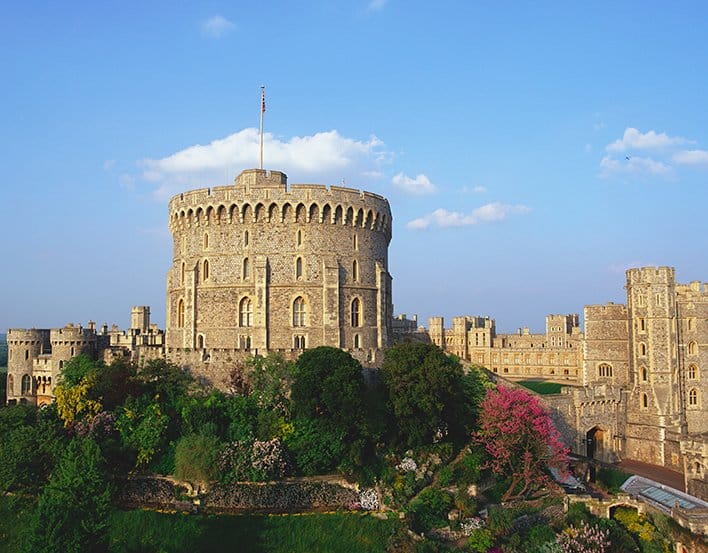
Address: Windsor SL4 1NJ, United Kingdom
Phone: +44 303 123 7334
St George’s Chapel
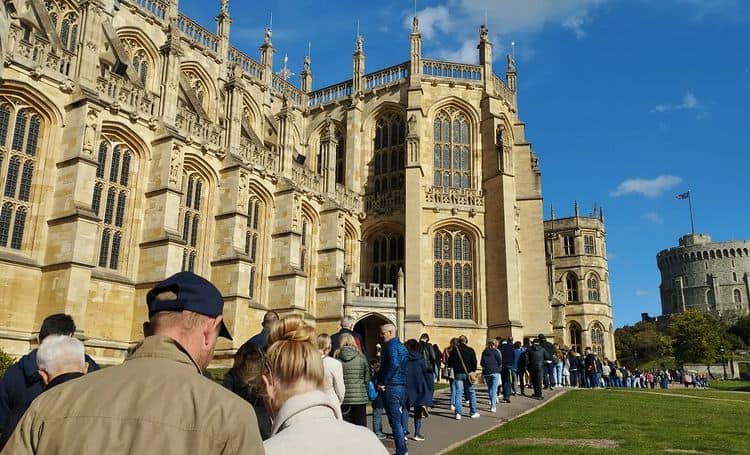
Address: Castle, 2 The Cloisters, Windsor SL4 1NJ, United Kingdom
Phone: +44 1753 848888
Cathedral and Abbey Church of St Alba “The Abbey”

Address: St Albans AL1 1BY, United Kingdom
Phone: +44 1727 860780
Natural History Museum at Tring
在 Instagram 查看这篇帖子
Address: The Walter Rothschild Building, Akeman St, Tring HP23 6AP, United Kingdom
Phone: +44 20 7942 6171
Tillingham Winery

Address: Dew Farm Dew Lane Peasmarsh, Rye TN31 6XD, United Kingdom
Phone: +44 1797 208226
Farnham Town
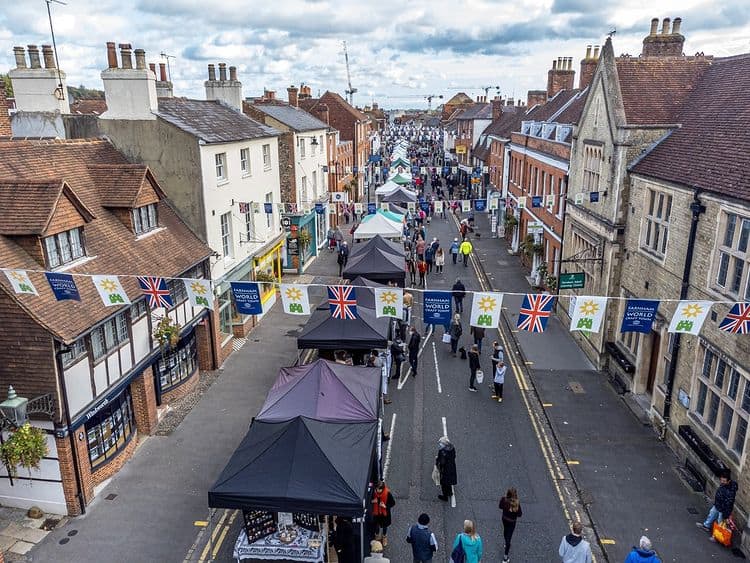
Address: Surrey, England, 36 miles southwest of London
Phone: 01252 712667
Box Hill
Address: North Downs, Surrey, South East England, 31 km southwest of London
Amersham Museum
Address: 49 High St, Amersham HP7 0DP, United Kingdom
Phone: +44 1494 723700
Chiltern Open Air Museum

Address: Newland Park, Gorelands Ln, Chalfont St Peter, Chalfont Saint Giles HP8 4AB, United Kingdom
Phone: +44 1494 871117
Turner Contemporary

Address: Rendezvous, Margate CT9 1HG, United Kingdom
Phone: +44 1843 233000
Dreamland Margate

Address: 49-51, Marine Terrace, Margate CT9 1XJ, United Kingdom
Phone: +44 1843 295887
Shell Grotto

Address: Grotto Hill, Cliftonville, Margate CT9 2BU, United Kingdom
Phone: +44 1843 220008
Frequently Asked Questions
How many people can travel in a car now?
Since all passengers should wear a seatbelt, the number of people allowed in a car depends on the number of available seat belts.
Overloading the car with passengers more than the available seats is prohibited. Not wearing a seatbelt is an offense and is subject to a £500 fine.
How many cars are there in London?
According to TfL’s Road Task Force data, London has approximately 2.6 million registered cars.
What type of vehicle could you expect to meet in the middle of the road?
The most common types of vehicles used are cars, vans, and taxis. You can expect to come across several popular car brands such as Ford, Vauxhall, Volkswagen, BMW, and Audi.
Can you drive on Oxford Street?
Private motor vehicles are not allowed on Oxford Street from 07:00 am to 07:00 pm from Mondays to Saturdays. However, there are no restrictions for taxis and buses.
Since there are restrictions in place and very limited parking spaces in Oxford Street, it is recommended to use public transportation instead such as London Bus, London Underground, and taxis.
Plan Your Journey Before Driving
The best way to avoid unwanted charges and getting lost on the road is to plan your journey ahead of time.
Once you decide on a destination, choose the most efficient route and check traffic status updates for closures or major delays.
If your trip involves using public transportation, you can plan your journey using TfL’s travel tools.
Plus, get all travel tips from Winterville’s latest articles. Whether you are looking for the best brunch and breakfast spots in Richmond or the best bars and pubs in Kensington and Chelsea, we’ve got you covered to help you create the perfect itinerary.
If you are planning to use public transportation from time to time, prepare in advance with several Winterville guides on London Overground, DLR London, London Trams, and River Bus.
Ready to Start Your Road Trip?
Driving in London is a breeze as long as you follow London’s basic road rules and prepare the necessary documents needed.
Moreover, make sure your vehicle is in the best condition to avoid problems along the way. Last but not the least, have a good time and relax on the ride!
Did you find this driving guide in London helpful? Leave a comment below in the comments section. If you have recommendations in mind, let fellow travelers know and leave a comment.

